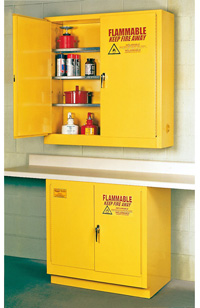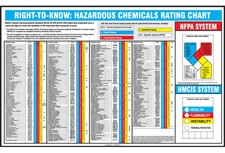| The Home page of ILPI's Safety Data Sheet (SDS) Resource, the leader in SDS information since 1995! | |
| The history and philosophy behind this resource. | |
| A curated collection of books and reference materials concerning Safety Data Sheets and closely related topics. | |
| Paste your plain text SDS into the SDS-Demystifier, and it will be converted into a hypertext-enriched document with links to detailed explanations of each key term. | |
| An extensive list of frequently asked questions about Safety Data Sheets including regulations, content, compliance, and more. | |
| A humorous take on Safety Data Sheet jargon. Fill in the blanks on our entry form to generate a personalized Unsafety Data Sheet to share with your coworkers. | |
| Since 1995, we've maintained this massive curated list of the best places to find Safety Data Sheets on the Internet. | |
| You are here! Way more than a glossary, this hypertext-enhanced resource covers hundreds of SDS-related terms and expert knowledge. Each entry includes both the SDS relevance and links to additional authoritative resources. | |
| Archived results of Safety Data Sheet related polls taken by some of our millions of site visitors | |
| The OSHA regulations behind SDS regulations, including the inspection guidelines and over 400 official interpretations letters under the Hazard Communication Standard | |
| Commercial suppliers of SDS authoring and management software as well as cloud compliance services. | |
| Commercial companies that will create SDS's for your specific needs as well as SDS translation companies. |

Safety signs, banners, and scoreboards? Get yours at Safety Emporium!
Definition
The National Fire Protection Association, NFPA, a private non-profit organization, is the leading authoritative source of technical background, data, and consumer advice on fire protection, problems and prevention. Their web site is http://www.nfpa.org/.
The primary goal of NFPA is to reduce the worldwide burden of fire and other hazards on the quality of life by providing and advocating scientifically-based consensus codes and standards, research, training, and education.
Additional Info
NFPA has over 300 codes worldwide which are for sale through their web site. These codes cover every conceivable topic including basic fire safety, the National Electrical Code, and life safety. These codes are developed and updated through an open process, ensuring their broad acceptance.

While NFPA codes cover several aspects of flammable materials pertinent to SDS's, perhaps the most significant is the NFPA 704 Hazard Identification ratings system (the familiar NFPA "hazard diamond" shown on the right) for health, flammability, and instability. The NFPA's Fire Protection Guide to Hazardous Materials, 2010 edition includes NFPA 704, "Standard System for the Identification of the Hazards of Materials for Emergency Response" as well as pertinent information from a variety of other NFPA publications (including NFPA 704 ratings for over 3,000 specific chemicals, information not included with NFPA 704).
What do the numbers and symbols on an NFPA fire diamond mean? The diamond is broken into four sections. Numbers in the three colored sections range from 0 (least severe hazard) to 4 (most severe hazard). The fourth (white) section is left blank and is used only to denote special fire fighting measures/hazards.
At first glance, the HMIS® and NFPA labeling systems appear quite similar. Both have four sections colored blue, red, yellow and white. HMIS® uses colored bars, while NFPA uses colored diamonds. HMIS® attempts to convey full health warning information to all employees while NFPA is meant primarily for fire fighters and other emergency responders.
Some employers use hybrids of the two systems. For example, they will use an NFPA hazard diamond, but the white section is used to denote both personal protective equipment (PPE) and/or special hazards. Both the NFPA and NPCA discourage mixing of the two systems in this manner. OSHA permits one to use any labeling system as long as it meets their labeling performance requirements. Thus, if you use a hybrid system at your location, your employees must be properly trained in using it and be made aware of these potential conflicts.
| Health Hazard | |||||||||||
 |
| ||||||||||
| Flammability | |||||||||||
 |
| ||||||||||
| Instability | |||||||||||
 |
| ||||||||||
| Prior to 1996, this section was titled "Reactivity". The name was changed because many people did not understand the distinction between a "reactive hazard" and the "chemical reactivity" of the material. The numeric ratings and their meanings remain unchanged. | |||||||||||
| Special Hazards | |||||||||
 |
| ||||||||
| Some organizations use other symbols, abbreviations, and words in the white Special Hazards section. NFPA 704 permits the use of additional symbols, but they must be placed outside of the NFPA diamond. The following symbols are not compliant with NFPA 704, but we present them here in case you see them on an SDS or container label. | |||||||||
| ACID | This indicates that the material is an acid, a corrosive material that has a pH lower than 7.0. | ||||||||
| ALK | This denotes an alkaline material, also called a base. These caustic materials have a pH greater than 7.0. | ||||||||
| COR | This denotes a material that is corrosive (it could be either an acid or a base). | ||||||||
 |
This is a another symbol used for corrosive. | ||||||||
 |
The skull and crossbones is used to denote a poison or highly toxic material. See also: CHIP Danger symbols and GHS pictograms. | ||||||||
 |
The international symbol for radioactivity is used to denote radioactive hazards; radioactive materials are extremely hazardous when inhaled. | ||||||||
 |
Indicates an explosive material. This symbol is somewhat redundant because explosives are easily recognized by their Instability Rating. | ||||||||
The exact guidelines by which you can place a chemical in one of these four categories are available in the NFPA standard (see Further Reading below).
NOTE: NFPA and other labeling codes (such as HMIS®) are NOT required by OSHA. OSHA has said "...OSHA does not endorse specific services or products. It would, therefore, be inappropriate for OSHA to require a particular labeling system's code on the material safety data sheet." (see this official OSHA interpretation). OSHA does have specific labeling requirements that must be fulfilled, and the hazard classifications that are required run completely counter to the now-obsolete HMIS® III sytem.
SDS Relevance

Store your aerosol cans safely with flammable storage safety cabinets from Safety Emporium.
Many manufacturers include NFPA 704 information on their Safety Data Sheets, but there has never been an OSHA requirement for them do so.
OSHA's adoption of the Globally Harmonized System (GHS) as part of the 2012 revision of the Hazard Communication Standard (29 CFR 1910.1200) changed container labeling requirements to include specific elements including pictograms, hazard statements, precautionary statements and a signal word. For the most part, this harmonized labeling system makes alternate labeling systems such as HMIS obsolete or redundant, however, NFPA 704 information is nice to have as local fire codes may require 704 signage on tanks, doors and other workplace locations.
In a 2013 interpretation letter, OSHA confirmed that SDS authors may include HMIS and NFPA ratings in Section 2 of the SDS as long as they do not contradict or cast doubt on the HCS 2012 classification.
We have emphasized the last part of that statement. Given that NFPA ranks 1 as low and 4 as high hazard whereas the HCS ranks 1 as high and 4 as low, it seems exceedingly likely that even trained employees will be confused if both systems are in simultaneous use, particularly at multi-employer workplaces. For example, using the two systems at the same time could result in a label with an NFPA flammability rating of 4 but a (required) GHS flammability classification of 1 on the same label! Therefore, we strongly discourage employers from using the NFPA system in workplace labeling unless legally required under local fire codes given the potential for confusion with the mandatory OSHA hazard classification and categorization system. At the same time, emergency first responders might like to have this information, so it makes sense for manufacturers to put NFPA ratings on the SDS as long as the difference in this rating system vs GHS is made abundantly clear.
Further Reading

This poster from Safety Emporium contains NFPA numeric ratings for hundreds of common chemicals.
- You can view (but not print, copy, paste, or save) the complete text of NFPA 704. You will have to create a free account on the NFPA site in order to view the materials, however.
- The Official NFPA 704 FAQ maintained by the NFPA.
- OSHA Quick Card: Comparison of NFPA 704 and HazCom 2012 Labels.
- Get a free NFPA diamond guide at Graphic Products Inc..
- GHS Hazard Classifications in Relation to HMIS® III & NFPA 704 Rating Systems at Waxie.
See also: combustible, flammable, health hazard, smoke.
